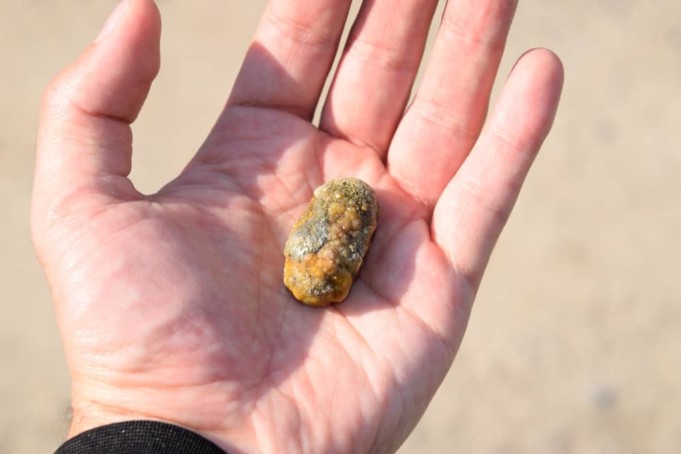Cholesterol is an organic molecule that is synthesized by the body to build and maintain cell membranes, enables intercellular transport, and is the precursor to the synthesis of Vitamin D and other steroid hormones.
Elevated levels of cholesterol in the body have several damaging effects and increase the risks of developing complications such as heart disease, stroke, and a condition known as gallstones.
Gallstones are hardened deposits that form in the gallbladder, a small sac situated underneath the liver. The gallbladder is responsible for storing and releasing bile in small amounts, which in turn digests fats.
Gallstones in the gallbladder may go for long periods unnoticed until they block a bile duct and cause pain. This would require immediate removal of the gallbladder. Choledocholithiasis is used to describe the presence of gallstones in the gallbladder.
Cholesterol makes up 80 percent of gallstones, according to Harvard Health Publications, while the remaining 20 percent made from calcium salts and bilirubin, a fluid the liver produces and the gallbladder stores.
Cholesterol stones are usually yellowish-green in color while stones formed from bile are darker in color. The size of gallstones ranges from one person to another. They could be as small as grains or as large as a golf ball.
Causes of Gallstones
Excess Cholesterol
The presence of excess cholesterol in your bile may lead to the development of yellow cholesterol stones. This occurs as a result of an imbalance in the chemical composition of the gallbladder.
Excess Bilirubin
When the liver destroys old red blood cells, it produces bilirubin. Certain conditions such as damage to the liver and also blood disorders may cause the liver to produce more bilirubin than necessary. Pigment gallstones form when the gallbladder cannot break down the excess bilirubin.
Full Gallbladder
For your gallbladder to remain healthy, it needs to be empty its content (bile). When this does not happen, the bile present becomes concentrated. This, in turn, causes gallstones to form.
Other factors that may increase the risk of developing gallstones include;
- Sex: Women, especially those that have given birth and are just before menopause are more likely to develop gallstones.
- Age: Gallstones are prevalent among those that are near or just above 40
- Race: Gallstones are prevalent among North and South Americans as well as people of European descent. This could be due to lack of melatonin which prevents the secretion of cholesterol in the gallbladder and enhances the conversion of cholesterol into bile
- Nutritional Factors: Constipation, low intake of magnesium, calcium, vitamin C, folate, and low fluid consumption may increase the risk of developing gallstones. Whole grain bread and wine may decrease the risk.
- Weight: People who are overweight or obese are more likely to develop gallstones.
Symptoms
Many people living with gallstones are not aware they have it. The presence of gallstones, more often than not, show no signs.
If however, a gallstone becomes trapped in a bile duct inside the gallbladder, it may trigger intense and sudden pain. Gallstones may lead to an inflamed gallbladder or cholecystitis.
The sudden pain can last for up to 5 hours. Cholecystitis can cause intense and chronic pain, jaundice (yellowing of eyes and skin), and increased body temperature. Other symptoms include nausea, back pain, vomiting, agitation.
Diagnosis
The tests to check for the presence of gallstones will be conducted by a medical professional. The tests used to diagnose gallstones and its complications include:
- Abdominal Ultrasound: This test is used to check for signs of gallstones. The ultrasound involves using a transducer across your belly. The transducer produces sound waves and sends the signal to a computer.
- Endocrine Ultrasound: This is used to check for small stones that may be missed during an abdominal ultrasound. The procedure involves passing a thin, flexible tube through the mouth and into the intestinal tract. An image of the tissue is created through sound waves produced from a small ultrasound device in the tube.
- Blood Test: This would check for infections, pancreatitis, jaundice, and other complications that may arise due to gallstones.
Treatment
Many people living with gallstones may go throughout their lives without needing treatment. A medical professional will determine if treatment is required depending on the symptoms the patient may exhibit and from diagnostic testing.
It is recommended that the patient be alert for symptoms of complications due to gallstone, such as intense pain in the abdomen area. Treatment includes;
Cholecystectomy
This is the surgery to remove the gallbladder. The surgery may be recommended depending on the frequency of gallstones in the gallbladder.
When the gallbladder is removed, bile from the liver flows directly into the small intestine instead of being stored in the gallbladder. You can live just fine without a gallbladder, and it’s removal would not affect to digest food.
Medication
Oral medications may help dissolve gallstones. It may, however, take a very long time (months or even years) to dissolve the gallstones, and they may reoccur if treatment is stopped.













Great information